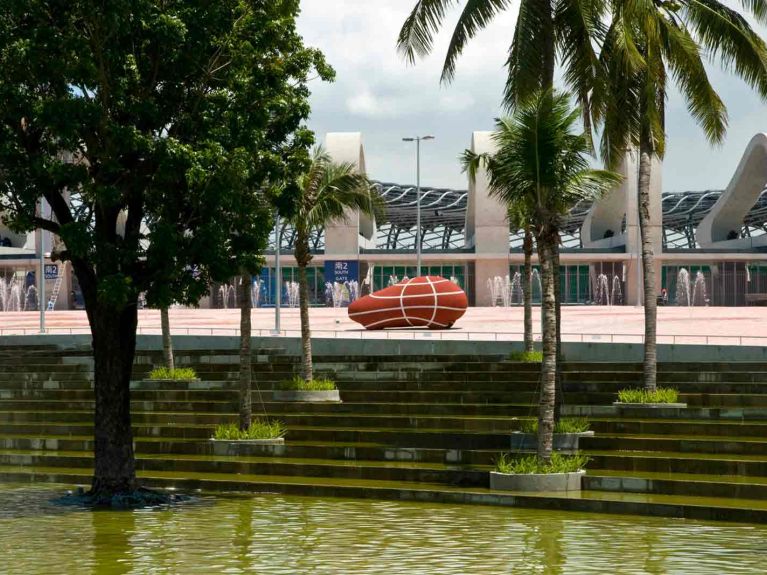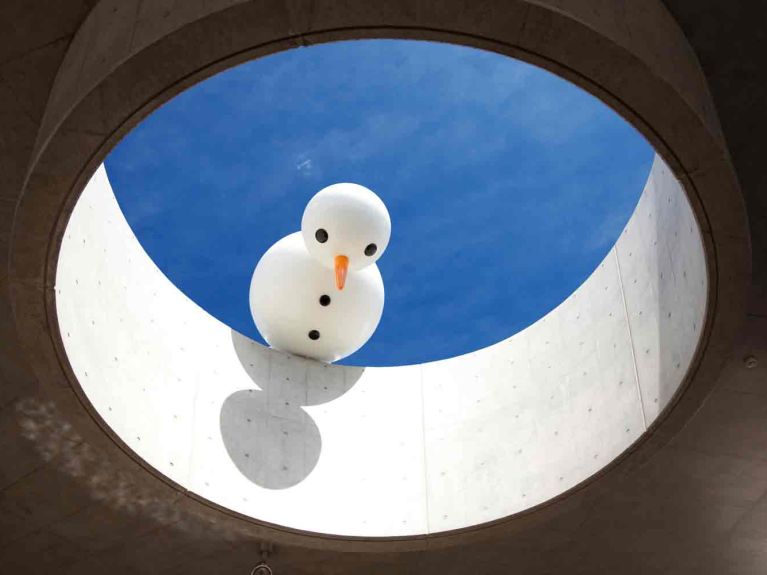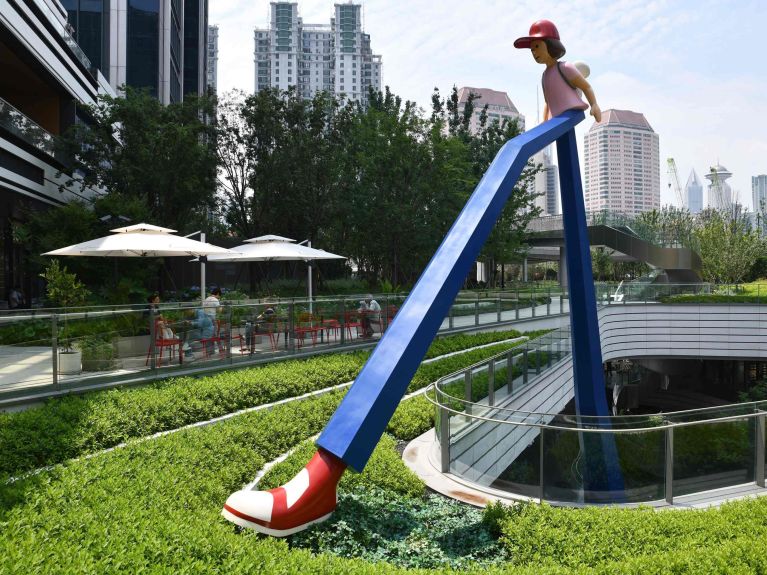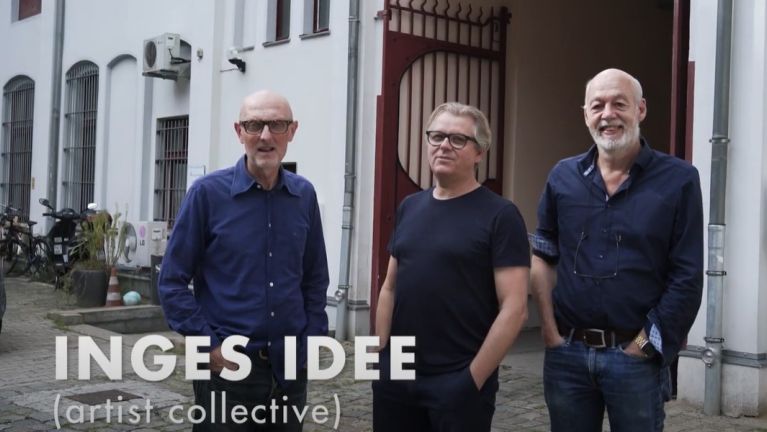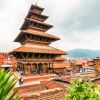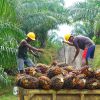Art in public spaces: “Getting people to engage in dialogue”
The sculptures designed by the German artistic collective “Inges Idee” are popular in Asia. In our interview, Georg Zey explains why their art fits in so well in Asia.
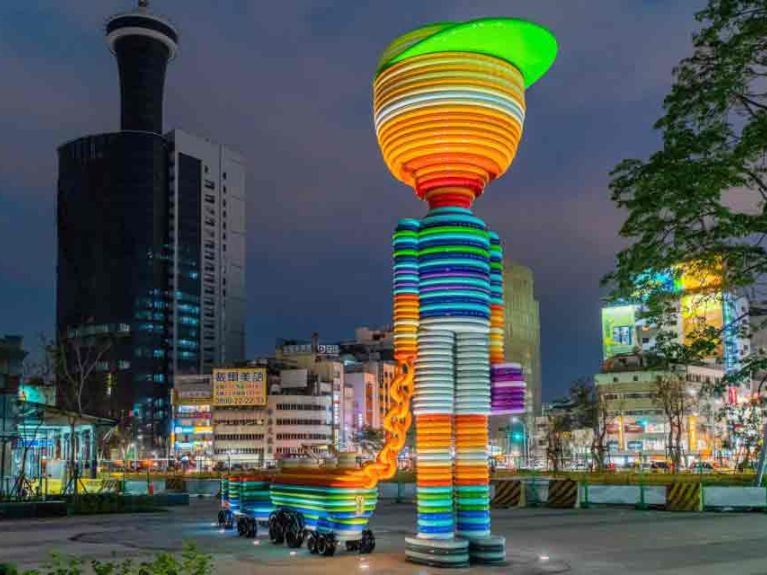
The sculptures designed by “Inges Idee” are often brightly coloured and reminiscent of oversized toys that have been left lying somewhere: a small blue boat, a snowman, a dog made out of spanners. The art also brings objects to life and enjoys placing them in a different context, however. For example, “Inges Idee” presents an electric pylon that can be seen dancing (“Zauberlehrling”) or sitting on a bench, apparently having a rest (“Freizeit/Muße”). A snake-like creature is created using high-water markings (“Anticipatory Measure”), a deer is made out of antennae (“On Receipt”) and a rabbit is formed out of sections of road surface (“Rabbit”). Georg Zey is one of the artists in the “Inges Idee” collective. In our interview he talks about his passion for getting people to engage in dialogue, about working in the group and about the popularity of art in public spaces in Asia.
Mr Zey, the artistic collective “Inges Idee” is very much in demand in Japan, South Korea, Taiwan and Singapore. Why is your work so popular in Asia?
Georg Zey: We did our first projects for Asia in Japan, the first artwork being in Tokyo. The way people in Asia approach small, toy-like, pop-art objects differs from the way people in Europe or the US do. Small figures and characters are appropriated and appreciated in a quite different way. That was a good fit for our art.
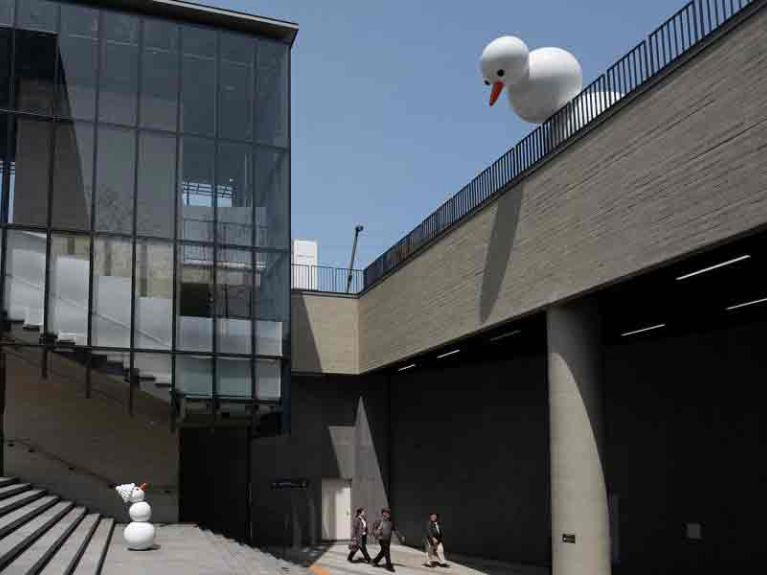
How did that first artwork in Japan come about?
In 1989/1990, when the Berlin Wall fell and Germany reunified,Berlin artistswho had joined forces from East and West were offered group exhibitions in various countries. There are four of us artists at Inges Idee: Hans Hemmert, Thomas A. Schmidt and I had got to know each other at the then Hochschule der Künste, now renamed the University of the Arts, in Berlin, and Axel Lieber joined us from Düsseldorf. Hans Hemmert and I already knew curators in Japan. At some point, we got an enquiry from an agency about a first commission. That was followed by a second, then a third and a fourth.
How did your first trip to Japan go? Were you as enthusiastic about the country as it was about you?
I found Japan fascinating, and still do – its urban aesthetic, the way social life functions, the legendary cuisine, the rice wine, the list is endless. There are also some special features of life in other Asian countries, like the way people live together and move around in such confined spaces. What really made an impression on me is the traffic in Taiwan: five cars next to one another in two lanes, but sooner or later everyone gets the chance to move forward. I find Taiwan to be open and democratic, and the hospitality is great. Incidentally, we had many of our art objects, which were later assembled in Germany, produced there. A wonderful country!
What do you find so fascinating about art in public spaces?
Art in public spaces affects and confronts one and addresses a particular site. It can displace the given context, making a place more interesting and richer. I am happy when people love our work and forge a connection to it. For me, it is dialogue that is interesting: when our art prompts people to engage in conversation, it works for me.
In Korea there is a great deal of artistic skill in production - such as metalworking techniques of a quality that cannot be found anywhere else.
How do you find the right place for a particular piece of art?
Depending on the country, art in public spaces may be part of the building culture and is selected via the democratic process of competition, much like in architectural competitions. These days, one even has to apply to take part in a competition in the great majority of cases in Germany. Things are different in many Asian countries – in Korea for example, specialised agencies select three or four artists that they then propose to the client. In these countries we are already relatively well known and are proposed from time to time. In some Asian countries, there are laws stipulating that art must take place in public spaces. That’s why there is a big market there, and why there is a lot of artistic skill in production and an entirely different approach to sculptural objects in Korea, for example. There are techniques there that don’t exist in Europe.
Such as?
Such as metalworking techniques of a quality that cannot be found anywhere else. A laser is used to cut sections out of two-dimensional materials, a bit like a dressmaking pattern, and then formed into 3D sculptures. There are factories there that make only art! That is quite something. All of our artworks on show in Asia were also produced in Asia. Normally we supervise the production process at the local level - though we couldn’t do that during the coronavirus pandemic. Last year we then flew to Korea and looked at a lot of our sculptures. Fortunately our art has a lifespan of around 20 years.
How do you prepare for that kind of selection process?
We have been active in this subsector of the visual arts for 30 years and have taken part in around 500 competitions. Consequently, we have a huge portfolio - like a toolbox we can pick and choose from. The four of us at Inges Idee are a bit like old aunts who know themselves and the quirks of the others very well. Over time we have developed a fairly stringent and single-minded approach to our work because we often have to act quickly. There are great advantages to working in a group: when making art in a public space, it’s nice to be a small public sphere oneself. That provides considerable scope for exchange.
Dieses YouTube-Video kann in einem neuen Tab abgespielt werden
YouTube öffnenThird party content
We use YouTube to embed content that may collect data about your activity. Please review the details and accept the service to see this content.
Open consent formAre there themes that occur repeatedly in your work?
Our objects engage specifically with the place where they will be installed. For example, for our “Lets Go!” artwork at the stadium in Kaohsiung in Taiwan we created a basketball-coloured hybrid between a huge sports shoe, a car and a ball. It can be perceived as an out-of-the-ordinary team bus for a sports team or perhaps as an abstract object that has been catapulted out of the stadium. The form, material and colour link the interior of the venue with the forecourt of the stadium. By displacing the context in this manner, we open people’s eyes to other aspects of reality and additionally activate the site.
We also often work with a “top-bottom” approach - sculptures divided into two sections that connect different architectural levels and allow them to be experienced afresh. For the university hospital in Seoul for instance, we came up with a snowwoman mum who is bending over a railing and looking down at her snowman child, who is standing on a flight of steps and looking up to her. That dovetails nicely with the emotional context of a hospital.
You work time and again in the same countries. What do you particularly appreciate about Asia?
People are very enthusiastic about realising projects and working relationships are amicable. I like that.
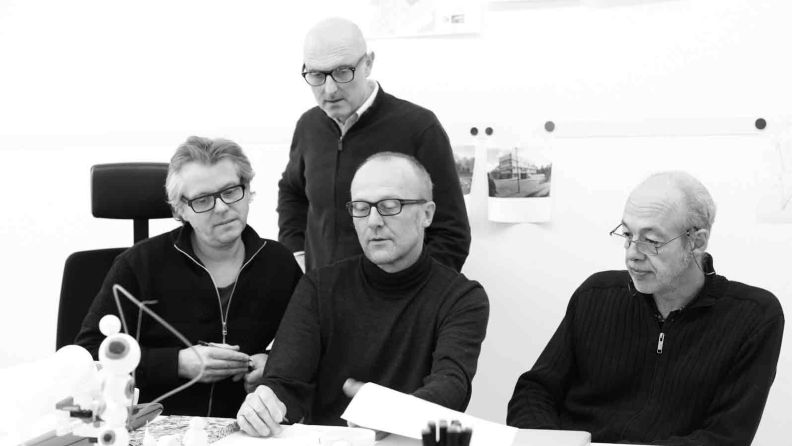
Together with Hans Hemmert, Axel Lieber and Thomas A. Schmidt, Georg Zey founded “Inges Idee” in 1992, an artistic collective that designs sculptural art in public spaces. Zey, born in Limburg an der Lahn in 1962, studied sculpture at Gesamthochschule Kassel and Hochschule der Künste (since renamed the University of the Arts) in Berlin. From 2004 to 2005 he ran the master’s degree course in “Art in Public Spaces and New Artistic Strategies” at Bauhaus-Universität Weimar and held a visiting professorship there from 2010 to 2011. In his own artistic work he explores different materials such as steel, aluminium, ceramic or silicone, using them to create structures and abstract imaginings of real objects.
